I thought this exercise would be relatively simple. On first reading the exercise text seemed to be fairly self-explanatory. However, as the exercise went on it turned into another frustrating episode where ambiguity and subjectiveness in the words chosen for the instructions really impacted my progress. I started out by writing down well-known proverbs that I, and people that I asked, could remember. I ended up selecting "A Penny for your Thoughts", as some interesting imagery jumped into my imagination when I read that entry on the list.

The exercise asked me to come up with a 'good' and 'bad' side of the proverb, and create an illustration for each. As every, I began by writing down ideas and exploring some thumbnail drawings.
I was actually really pelased with my thumbnails for the 'good' side, but when it came to the 'bad' side I really struggled. I could think of many surreal interpretations of the phrase, much like the visual examples in the course text. But many of them felt like a leap when considered as a 'bad' interpretation of a moralistic judgement. When I looked a little deeper, I realised that the phrase is an idiom as opposed to a proverb. I had to start again, and looked online for a broader repository of proverbs.
This is where my frustrations started to rise - the exercise implied that proverbs all have a moralistic narrative, and there are good and bad perspectives based on if you follow the instructions or not. However, when I looked at other proverbial examples (especially those outside of Western culture) I could not see nearly as much of the passive-agressive moralistic judgement. They didn't imply negative worth of they didn't follow the advice, just that they would somehow miss out from the implied wisdom.
So I decided to try and find something that would say something about me, instead. To put a different perspective into 'bad' as a way of completing the exercise. I found a Japanese proverb that resonated with me. It roughly translates as
"The nail the sticks out gets hammered down"
The implication being that conformity is good. To leave one's ego aside and fit into a collective is conducive to happiness. Those who do not confirm invite criticism and censure. The closest similar sayings in Western culture might be "Keep your head down [lest it get shot]" or "The tallest tree gathers the most wind". In a western culture it might seem obvious that this proverb is (apparently) a negative one, as much western culture seems to value individualism. In the context of the culture that it was created, I don't think that this proverb is inherently good or bad.
So given that there were analagous western proverbs/sayings, I thought I would try and thumbnail this proverb as well, but take a different perspective on the 'bad' version. One that mirrors my lived experience that much more. The connotation being that following the advice might actually have negative consequences. People who are neurodiverse tend to emply coming mechanisms that utilise masking in order to be accepted. However, long term making denies you (and those around you) what you are, and will likely lead to long-term mental health challenges. This is my experience - as someone who likes to perform, I also have crippling anxiety of being singled out for criticism or censure. I have always made sure I was a nail that didn't stick out.
The good/literal interpretations seemed to be ok, if a litle bland. I strugggled with the negative aspects, espcially when tring to link the imagery to nails and hammers. I tried a rough layout involving masks, but it didn't click at all for me. So I slept on it. When I woke up I decided just to crack on and do the thumbnails that most appealed to me, regardless if they spoke to nails directly or not.
The Good
Acting on previous feedback, I wanted to try and do these illustrations in my sketchbook without going digital, and to emply more traditional media if possible. I took my pots of acrylic gouache for the first image. Using guides along with a magic pencil, I sketched out a rough layout. I then painted over the top of this guide to create the basic illustration. I didn't like the quality or implementation very much, so I experimented with using pencils and Posca pens to add in more detail. Once scanned the overall effect was much better and it just about communicated the idea. I would certainly do it differently if taking the illustration further, making the shadow more prominent and obvious. I would also likely do it digitally to get the crisp quality that I had in my head.
The Bad
I didn't enjoy painting the previous illustration, so I decided instead to experiment with using alcohol-based markers. The simplicity of the design meant I moved rapidly from pencils (using guides) to then fleshing it out with colour. I did mess up some of the implementation details of the mask, and ended up perservereing. Once I had scanned the sketchbook page, I was able to clean up some of the erroneous lines and marks.

I am not sure how successful the message is, and the image is very basic. If I were to take this forward I would emply more pattern design skills to create the homogenous field of smiling faces. I do think that the sad square behind the mask does convey the sadness and exhaustion I often feel trying to fit into day-to-day life.
Summary
Again, I was frustrated by a brief that conveyed cognitive bias (implying moralistic values) as well as being generally too ambiguous. However, I am pleased that I resolved to get the exercise done and move on as quickly as possible. I definitely get the idea that this exercise is trying to convey, and I can look for opportunitiies to employ a more hostic interpretation of this brief in my future work.

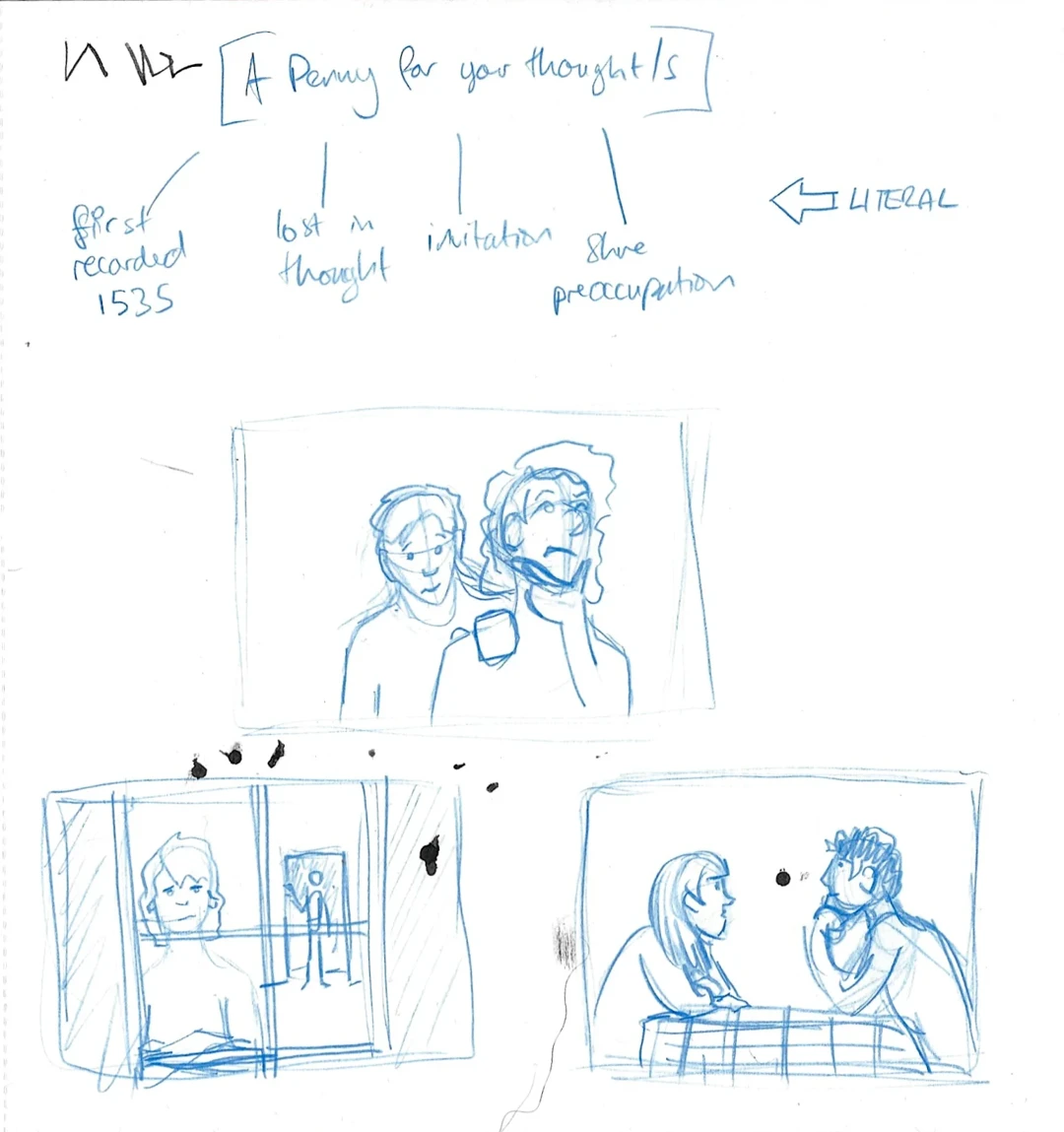
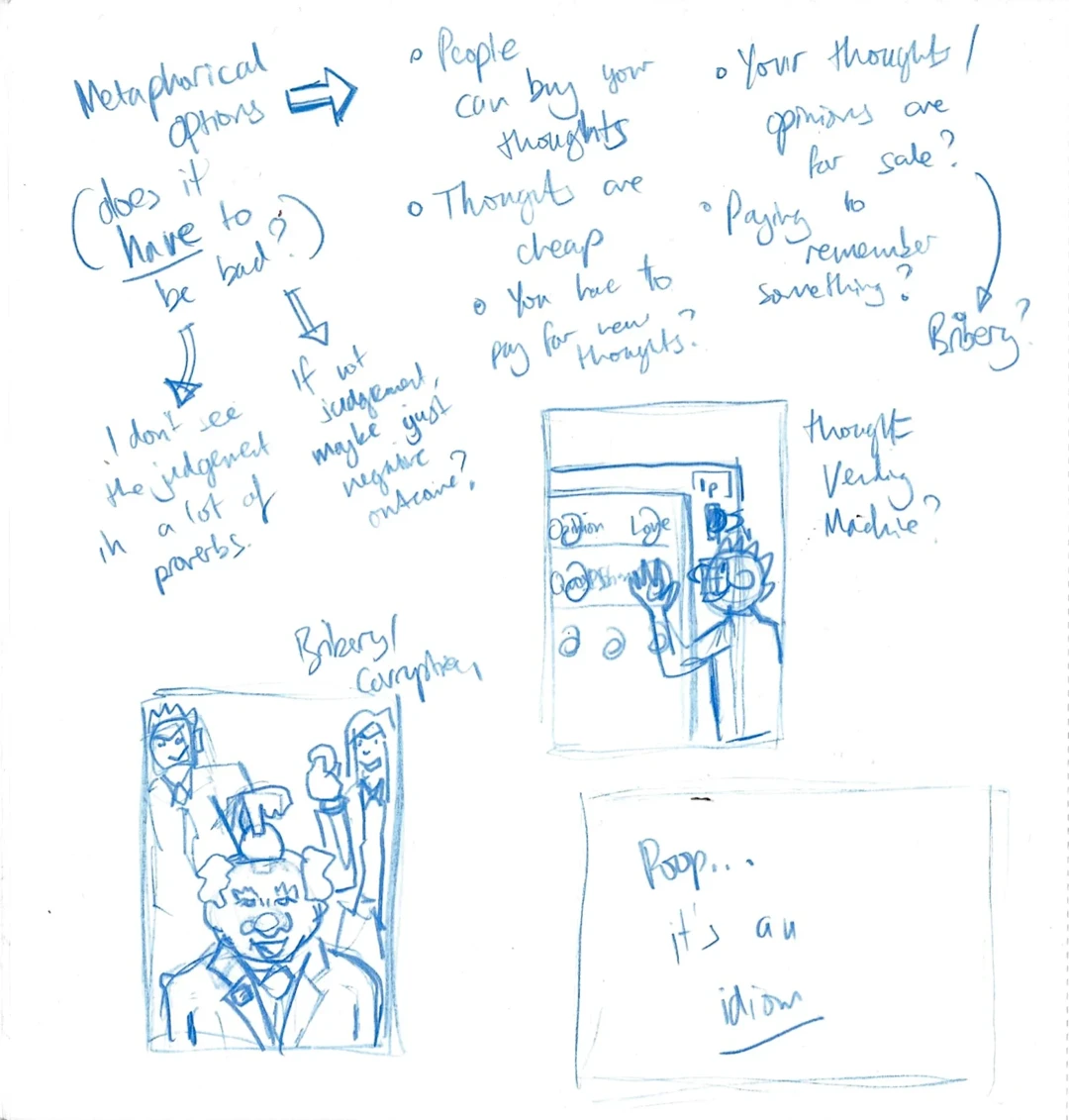
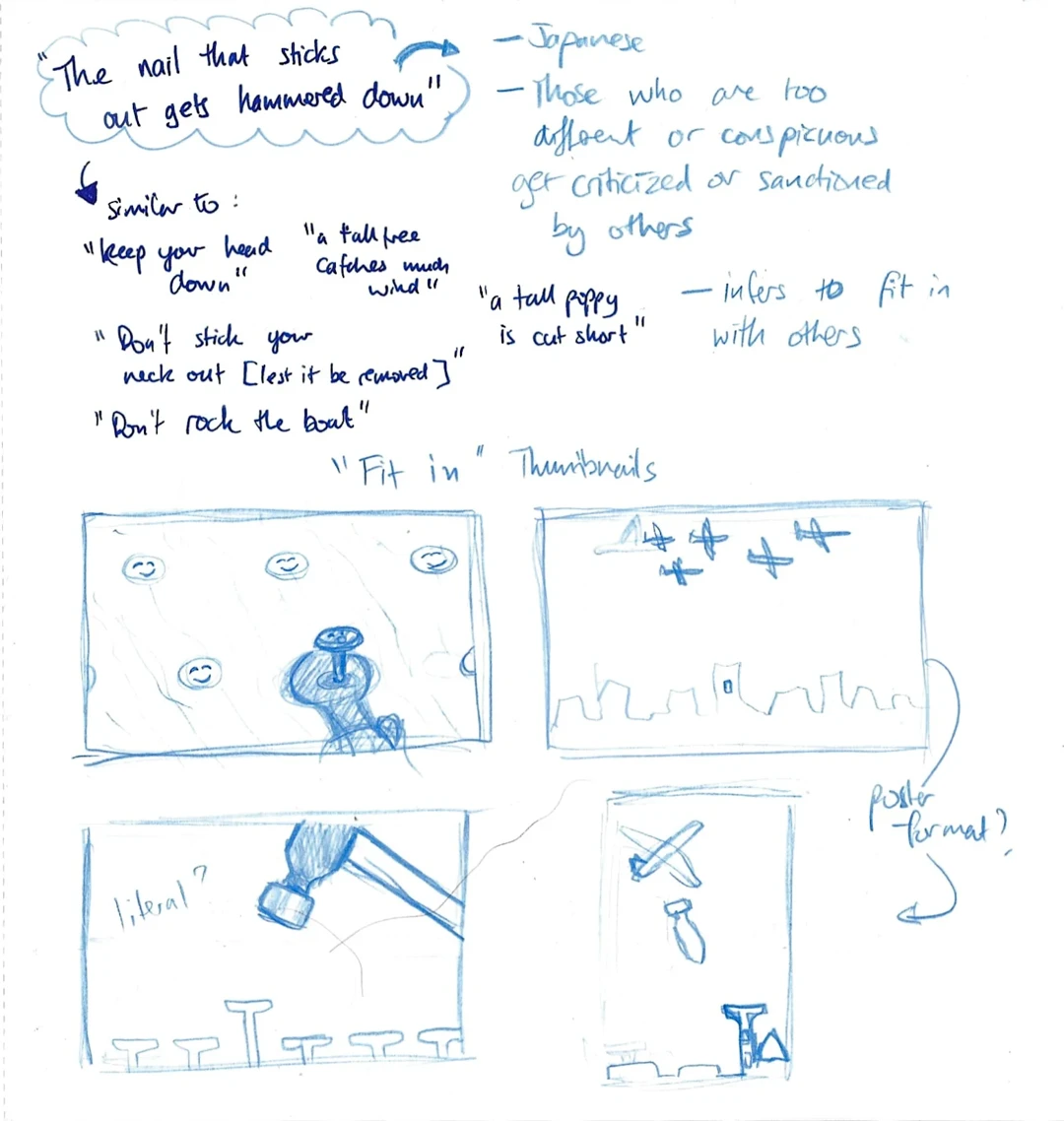
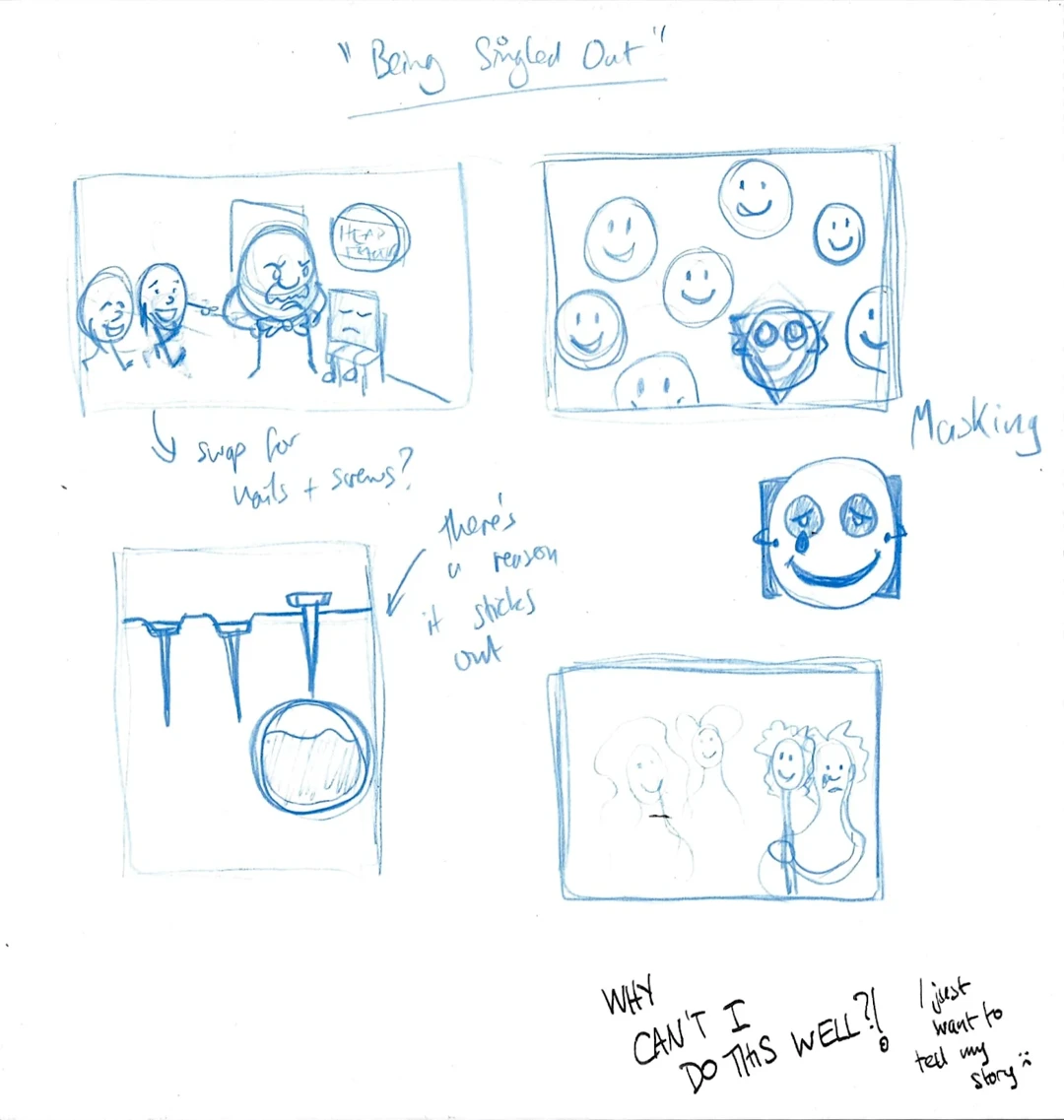

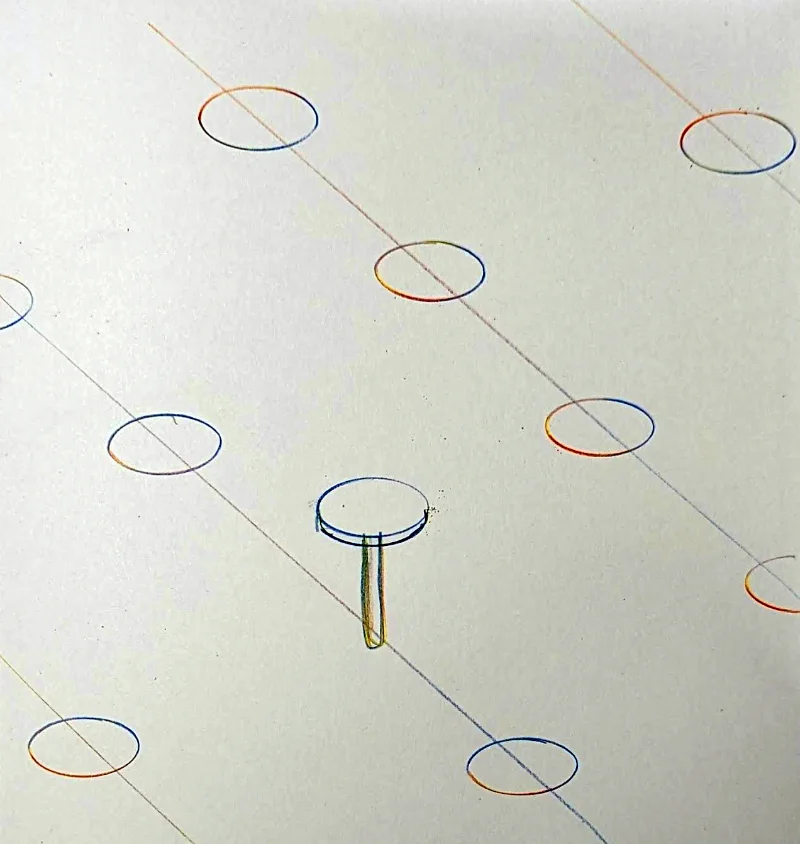

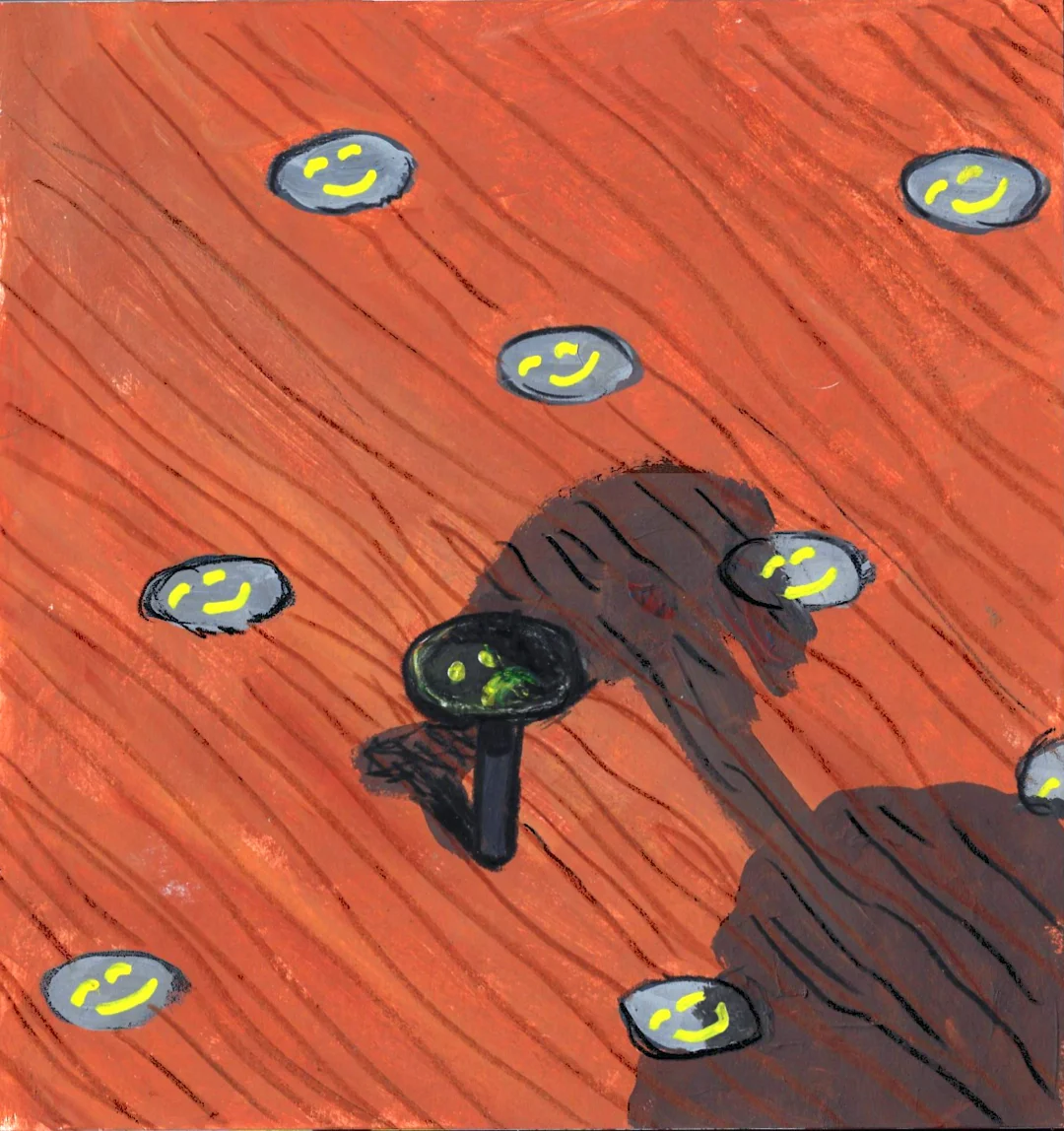
Comments